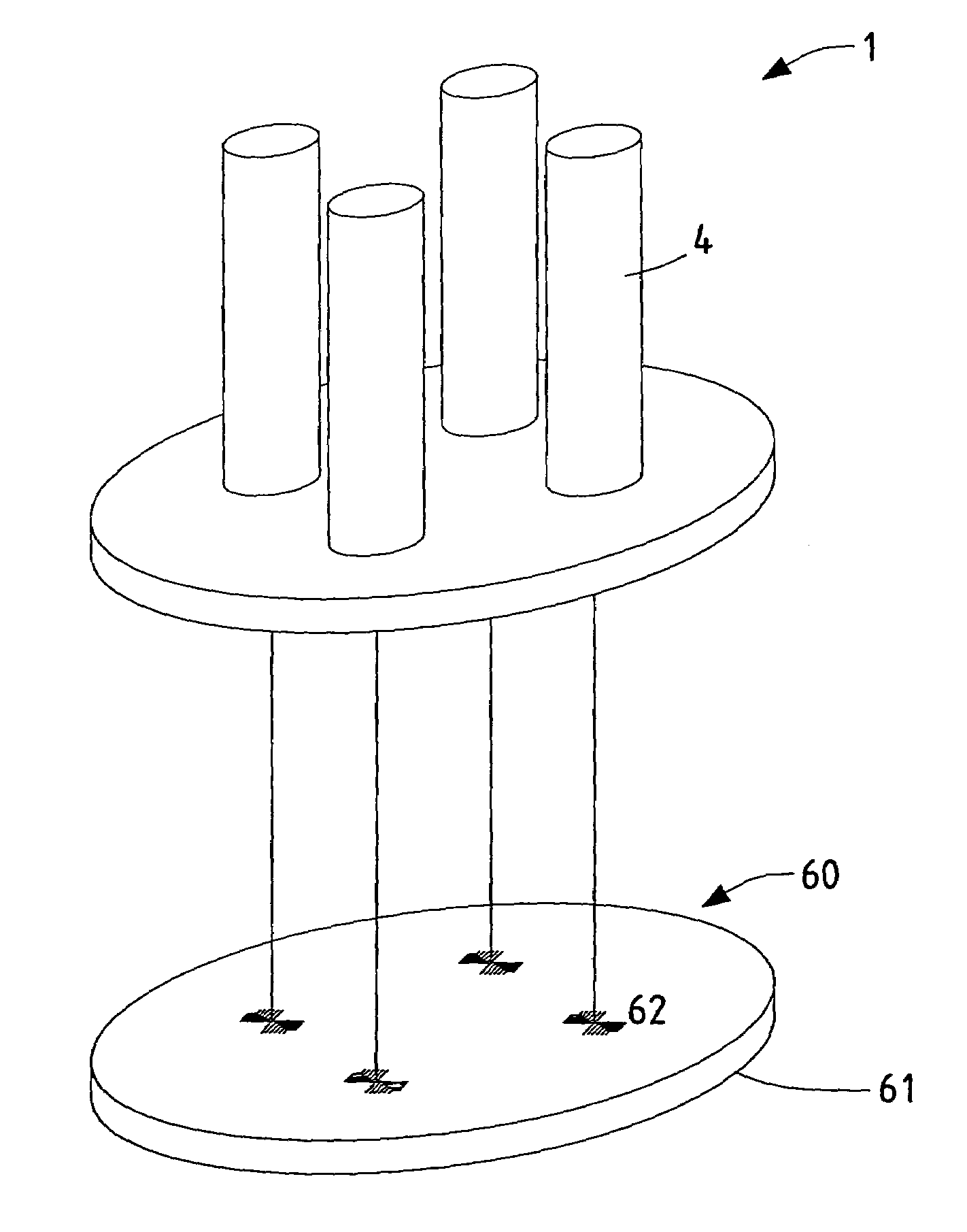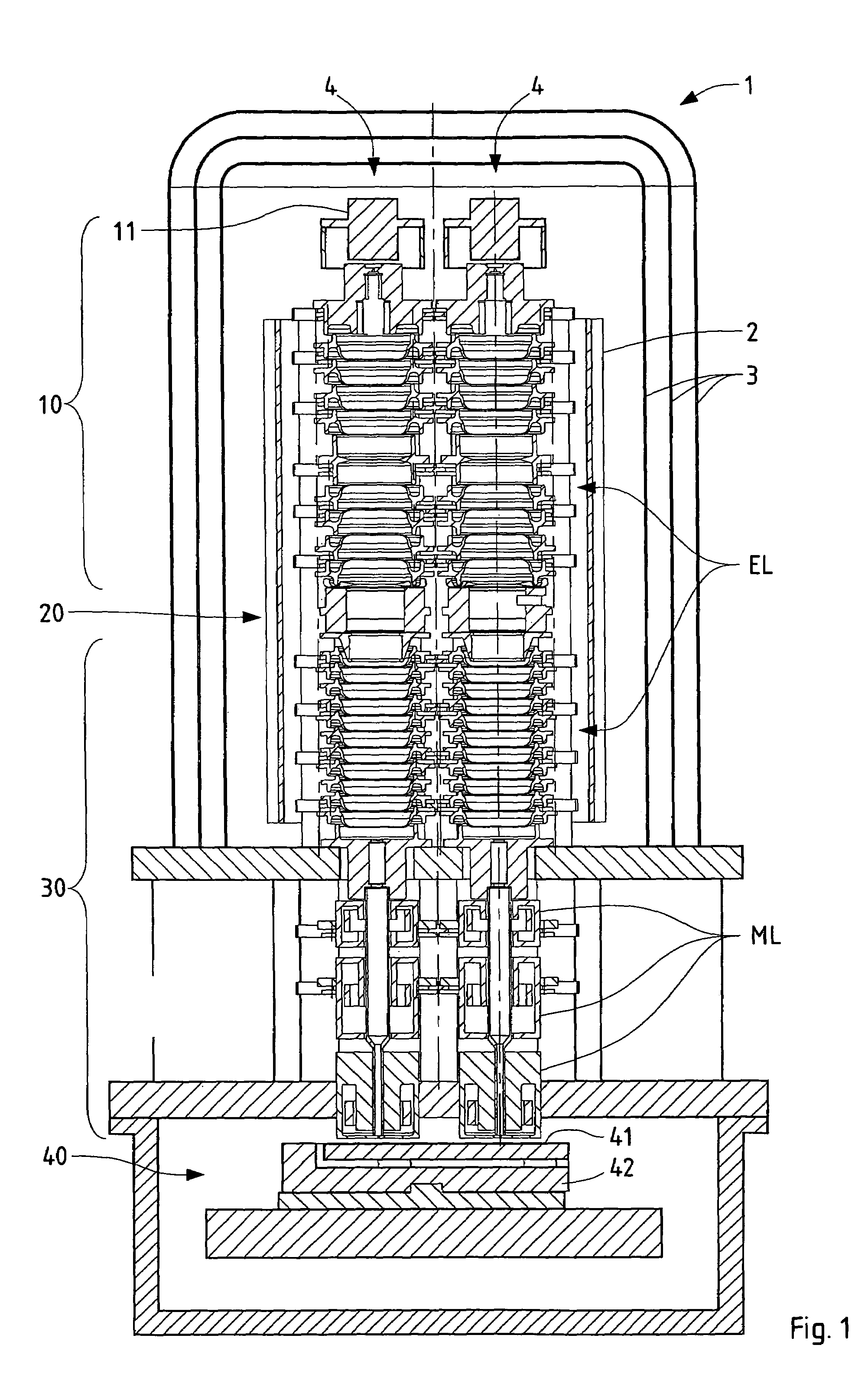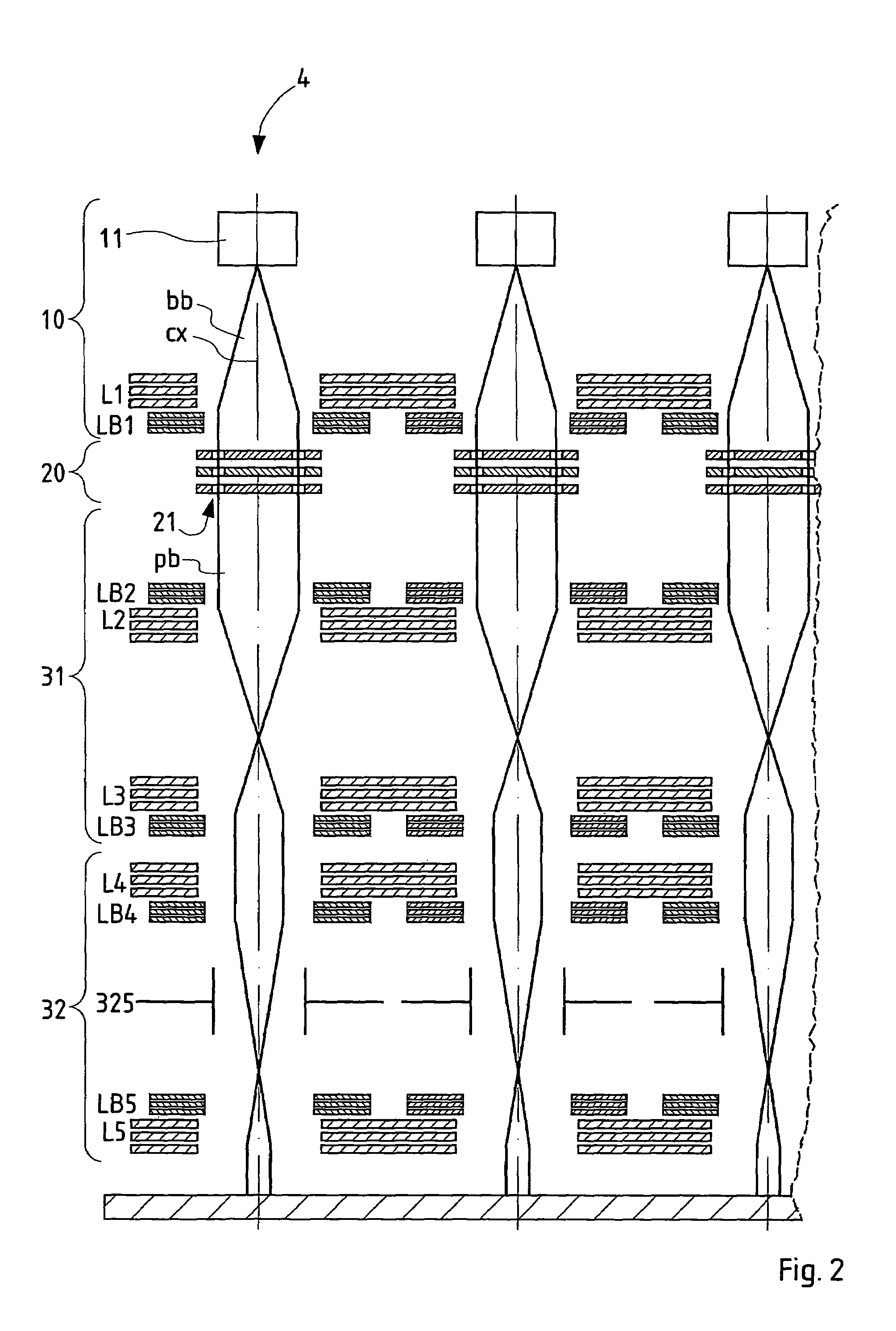Charged-particle multi-beam exposure apparatus
a multi-beam, charge-particle technology, applied in the field of charge-particle multi-beam exposure apparatus, can solve the problem that the reliability of sources scales with the number of sources, and achieves the effect of facilitating the generation of complex patterns, facilitating shielding out unwanted magnetic and electromagnetic fields, and enhancing beam autonomy
- Summary
- Abstract
- Description
- Claims
- Application Information
AI Technical Summary
Benefits of technology
Problems solved by technology
Method used
Image
Examples
Embodiment Construction
[0054]A preferred embodiment of the invention is shown in FIG. 1. Four columns are combined in a 2×2 arrangement of a multicolumn apparatus 1 for exposing a wafer held in the target chamber representing the bottom of the apparatus. The longitudinal section of FIG. 1 runs through two neighboring columns 4. FIG. 2 shows a schematic longitudinal-section view illustrating the basic elements of the device of FIG. 1. (For the sake of clarity, the columns are shown in FIG. 2 as if they were arranged in a single plane.)
[0055]Major improvements of the embodiment over the prior art are, for example, that it offers a large redundancy in the pattern generation process on the one side, and an avoidance of alignment problems between different columns on the other side. It represents a novel implementation of multi-column and multi-beam (per column) approach, based on the above-mentioned U.S. Pat. No. 6,768,125. Furthermore, it allows to partially reduce or even circumvent technical risk issues in...
PUM
| Property | Measurement | Unit |
|---|---|---|
| currents | aaaaa | aaaaa |
| velocity | aaaaa | aaaaa |
| energy | aaaaa | aaaaa |
Abstract
Description
Claims
Application Information
 Login to View More
Login to View More - R&D
- Intellectual Property
- Life Sciences
- Materials
- Tech Scout
- Unparalleled Data Quality
- Higher Quality Content
- 60% Fewer Hallucinations
Browse by: Latest US Patents, China's latest patents, Technical Efficacy Thesaurus, Application Domain, Technology Topic, Popular Technical Reports.
© 2025 PatSnap. All rights reserved.Legal|Privacy policy|Modern Slavery Act Transparency Statement|Sitemap|About US| Contact US: help@patsnap.com



